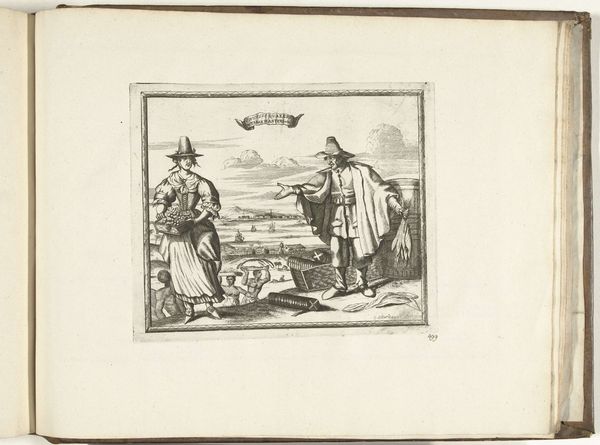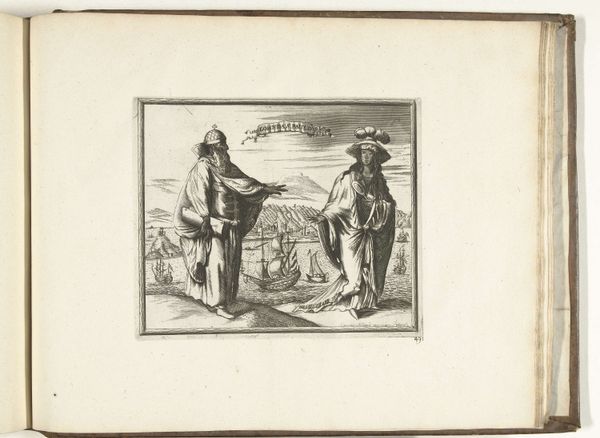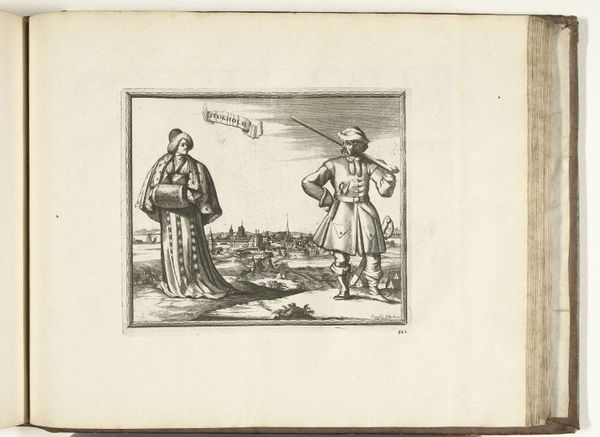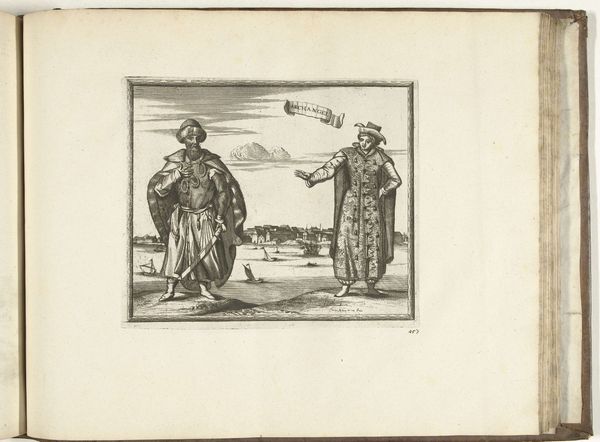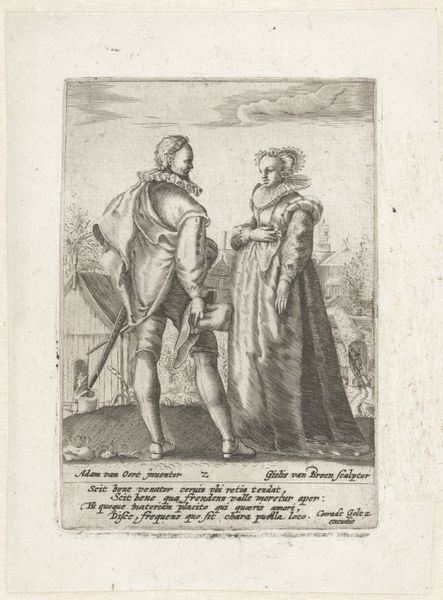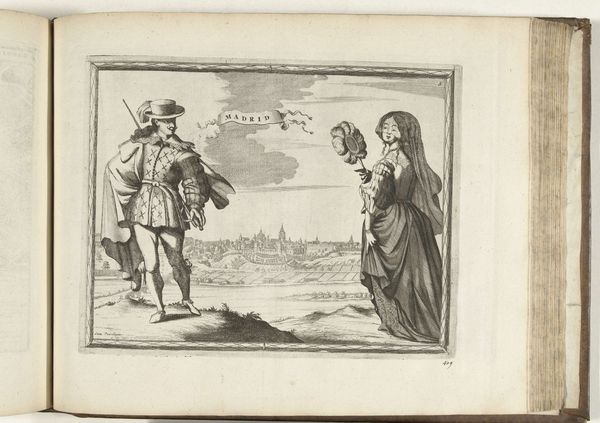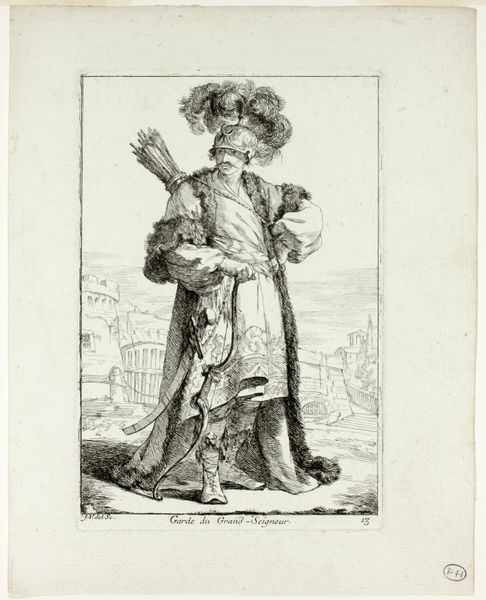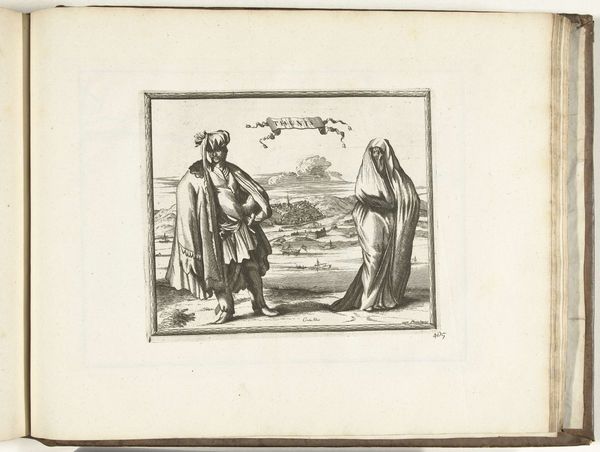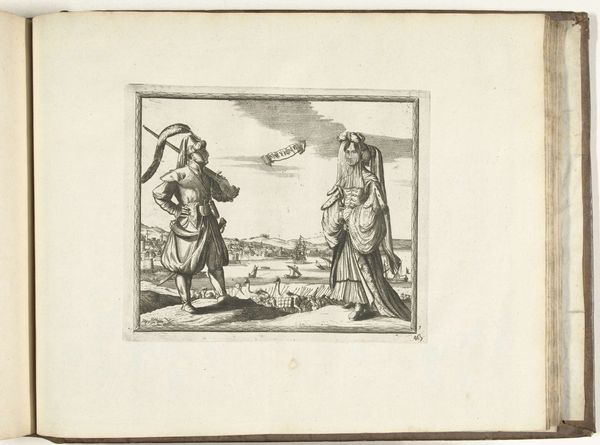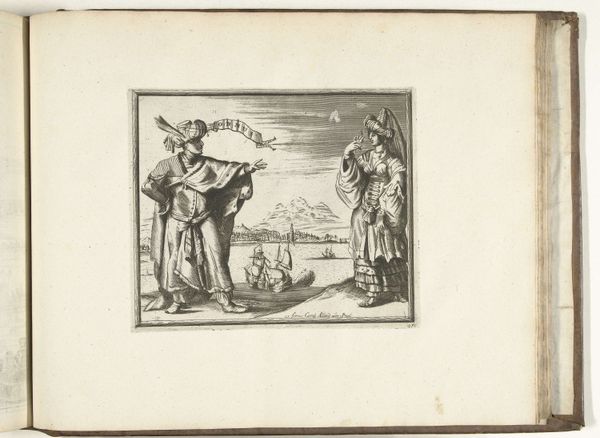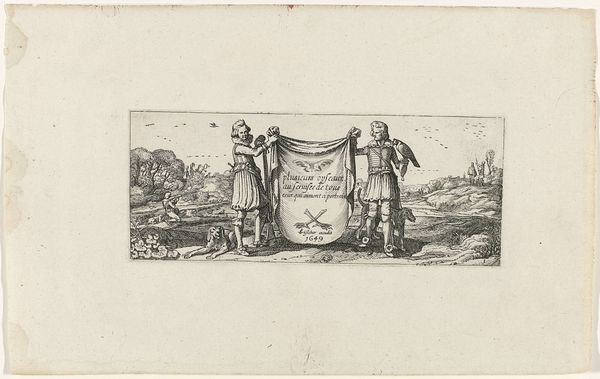
print, engraving
#
portrait
#
dutch-golden-age
# print
#
landscape
#
figuration
#
line
#
cityscape
#
genre-painting
#
engraving
Dimensions: height 223 mm, width 278 mm
Copyright: Rijks Museum: Open Domain
Curator: This engraving, dating from the late 1680s, is entitled "Vrouw en man gekleed in de mode van Amsterdam," or "Woman and man dressed in the fashion of Amsterdam." It's currently housed here at the Rijksmuseum. What are your initial thoughts? Editor: Well, I'm immediately struck by the almost comical exaggeration of wealth. The sheer volume of fabric and the stiffness of their poses makes them appear less like people and more like monuments to consumerism. Curator: Precisely. Let’s consider Amsterdam during that period. The Dutch Golden Age was in full swing. Amsterdam was a global hub of trade, and these figures flaunt their prosperity. It’s vital to view them as representations of aspirational status, signaling participation in, and benefiting from, global markets and colonial ventures. Editor: I see your point, but I also think we can read it as complicity. The almost cartoonish fashion underscores how appearance and performance were central to maintaining social hierarchies. It prompts the questions: At whose expense does this prosperity come, and how do they justify that exploitation through visual display? Curator: Indeed, looking closer at their clothing, we can see the labor involved. Sumptuous textiles indicate access to raw materials sourced from colonized lands, woven and tailored by an exploited labor force. They're wearing their wealth as a statement of power and dominance. Their style choices reflect existing socio-economic inequalities. Editor: And beyond individual choices, the engraving as a whole plays into a system that reinforces this status quo. Printmaking disseminated these fashionable styles across wider audiences. So this is less about art for art's sake and more about reinforcing social structures. Curator: Yes. It begs a consideration of our contemporary parallels: How do images, disseminated in media, reinforce or challenge power structures? Editor: A crucial consideration as we analyze art's role then and now. Thanks for drawing my attention to this work. Curator: It highlights how visual display is entangled with ethics, which is really critical to remember when thinking about art, history, and how we inhabit the world today.
Comments
No comments
Be the first to comment and join the conversation on the ultimate creative platform.
